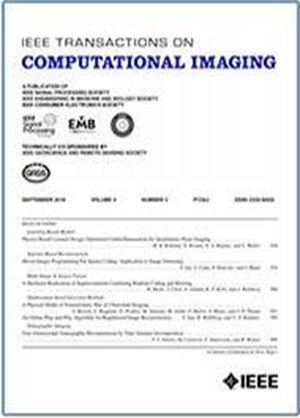Single-Frame MIMO Radar Velocity Vector Estimation via Multi-Bounce Scattering
IF 4.8
2区 计算机科学
Q2 ENGINEERING, ELECTRICAL & ELECTRONIC
引用次数: 0
Abstract
Radars are widely adopted for autonomous navigation and vehicular networking due to their robustness to weather conditions as compared to visible light cameras and lidars. However, radars currently struggle with differentiating static vs tangentially moving objects within a基于多弹跳散射的单帧MIMO雷达速度矢量估计
与可见光相机和激光雷达相比,雷达对天气条件的鲁棒性更强,因此被广泛应用于自动导航和车辆网络。然而,雷达目前很难在单一雷达框架内区分静态和切向移动的物体,因为两者在雷达的视线路径上产生相同的多普勒。先前的解决方案部署多个雷达或可见光相机模块,形成一个多“看”合成孔径,用于估计单帧速度矢量,以估计运动物体的切向和径向速度分量,从而导致更高的系统成本。在本文中,我们提出利用环境中二次静态物体(如建筑物柱子、墙壁等)的多次弹跳散射,形成一个有效的多“看”合成孔径,用于单帧速度矢量估计,从而降低了系统的整体成本,并消除了对多模块同步的需要。我们对我们的方案进行了全面的理论和实验评估,证明在可比的单雷达基线上估计运动物体的速度矢量的误差减少了4.5倍。
本文章由计算机程序翻译,如有差异,请以英文原文为准。
求助全文
约1分钟内获得全文
求助全文
来源期刊

IEEE Transactions on Computational Imaging
Mathematics-Computational Mathematics
CiteScore
8.20
自引率
7.40%
发文量
59
期刊介绍:
The IEEE Transactions on Computational Imaging will publish articles where computation plays an integral role in the image formation process. Papers will cover all areas of computational imaging ranging from fundamental theoretical methods to the latest innovative computational imaging system designs. Topics of interest will include advanced algorithms and mathematical techniques, model-based data inversion, methods for image and signal recovery from sparse and incomplete data, techniques for non-traditional sensing of image data, methods for dynamic information acquisition and extraction from imaging sensors, software and hardware for efficient computation in imaging systems, and highly novel imaging system design.
 求助内容:
求助内容: 应助结果提醒方式:
应助结果提醒方式:


